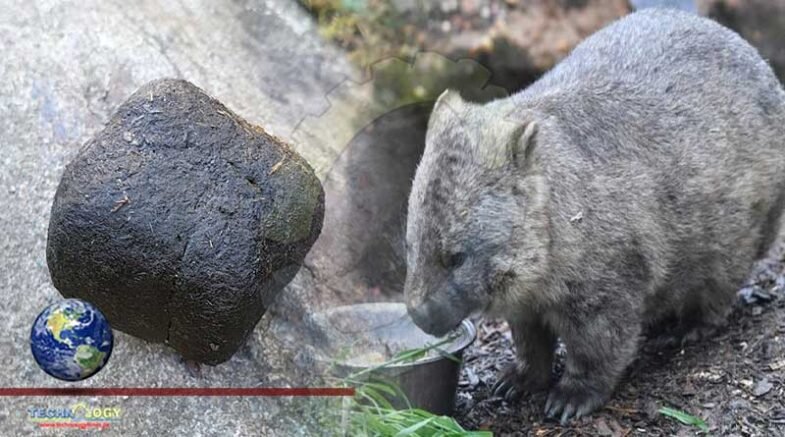Humans may be fascinated by cubes, but only one animal poops them: the bare-nosed, furry Australian marsupial, wombat squeezes out

Humans may be fascinated by cubes, but only one animal poops them: the bare-nosed wombat. This furry Australian marsupial squeezes out nearly 100 six-sided turds every day—an ability that has long mystified scientists. Now, researchers say they have uncovered how the wombat intestine creates this exceptional excrement.
“This study is really good,” says Sunghwan Jung, a biophysicist at Cornell University who studies the mechanics of animal movements and was not involved with the research. It shows, he says, that the guts of these animals “are very special.”
The bare-nosed wombat (Vombatus ursinus), which weighs up to 35 kilograms, lives in the grassy plains and eucalyptus forests of Australia, where it spends its nights grazing on plants and its days in underground tunnels. It’s a territorial animal, leaving its unusual droppings as a calling card. But how does such sharp-sided scat come from a round anus?
To get to the bottom of the mystery, scientists dissected a wombat that had died after being hit by a car. They examined the intestines and found that they contain two grooves where the guts are more elastic, which the team first reported in 2018.
In the new study, the researchers dissected two further wombats and tested the guts’ layers of muscle and tissue, finding regions of varied thickness and stiffness. They then created a 2D mathematical model to simulate how the regions expand and contract with the rhythms of digestion. The intestinal sections contract over several days, squeezing the poop as the gut pulls nutrients and water out of the feces, the team reports today in the aptly titled journal Soft Matter.
The stiffer portions are “like a stiff rubber band—[they’re] going to contract faster than the soft regions,” says David Hu, a biomechanics researcher at the Georgia Institute of Technology and author on the study. Softer intestinal regions squeeze slowly and mold the final corners of the cube, the team found. In other mammals, the wavelike peristalsis of the intestinal muscles are consistent in all directions. But in the wombat, the grooved tissue and the irregular contractions over many cycles shape firm, flat-sided cubes.
That just leaves one mystery: why wombats evolved cubic poop in the first place. Hu speculates that because the animals climb up on rocks and logs to mark their territory, the flat-sided feces aren’t as likely to roll off from these high perches.
As for what the world is supposed to do with this new information, Hu admits that it’s “not going to replace the way we manufacture plastic.” But the wombat’s strategy could help engineers design better ways to shape valuable or sensitive materials, he says.
In the meantime, Hu also thinks this knowledge could help researchers raising wombats in captivity. “Sometimes their feces aren’t as cubic as the [wild] ones,” he says. The squarer the poop, the healthier the wombat.
Originally Published at Science Mag
